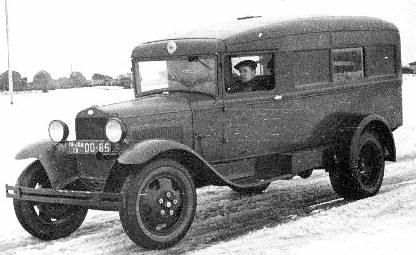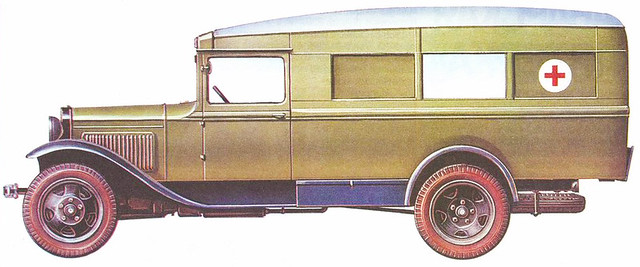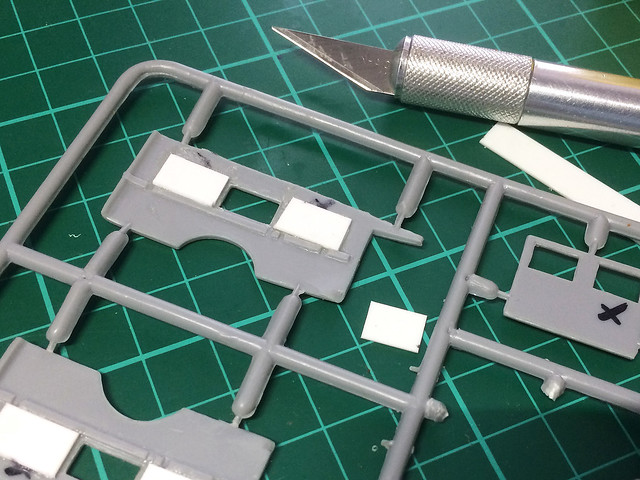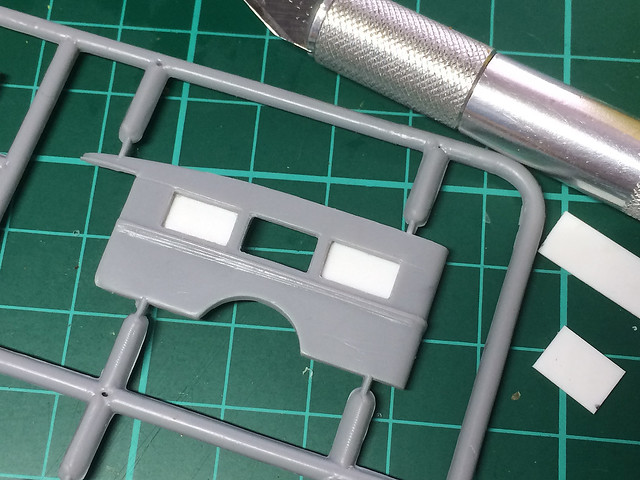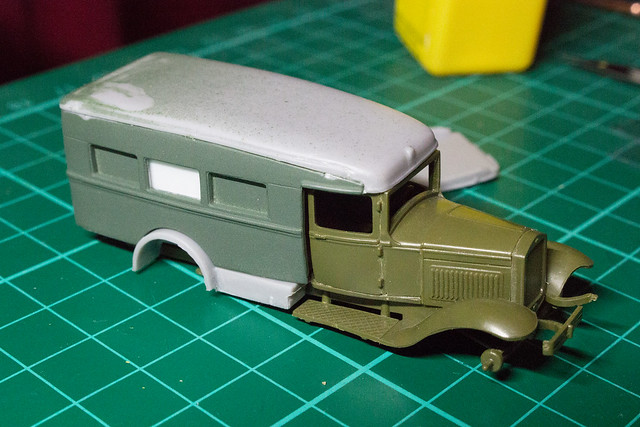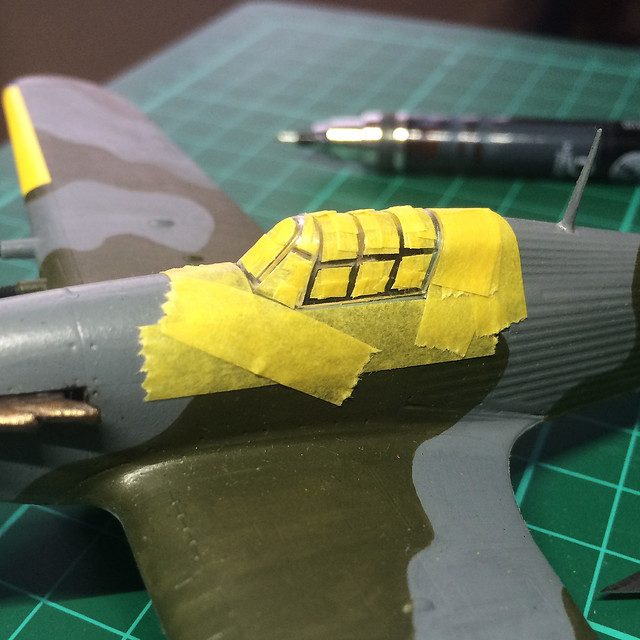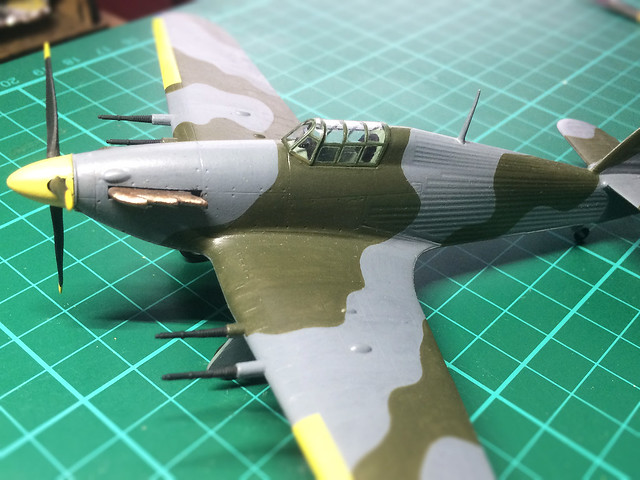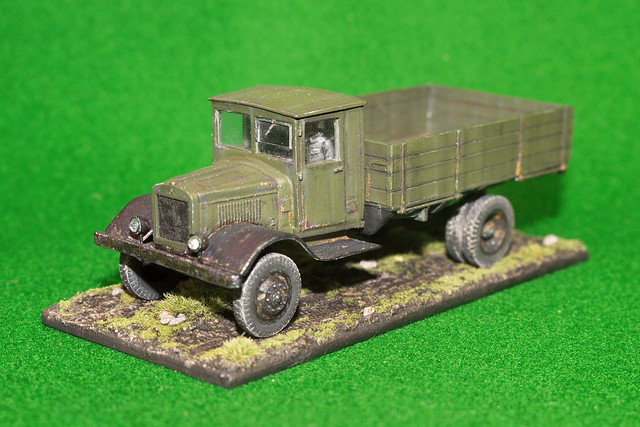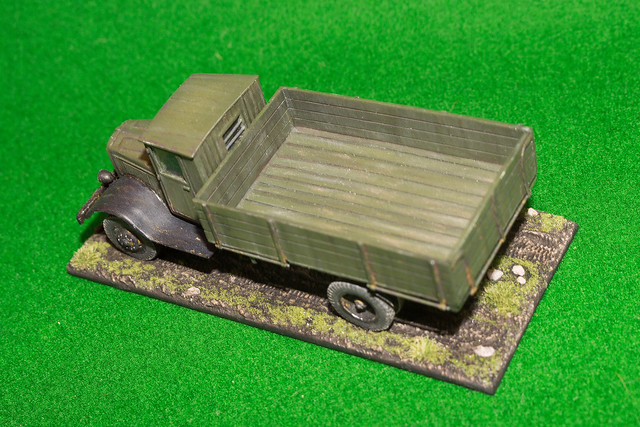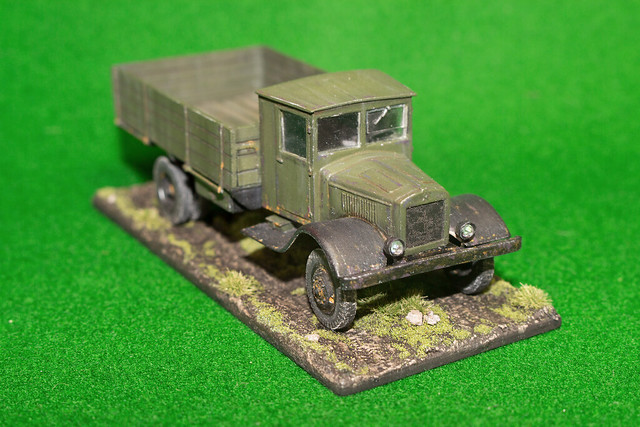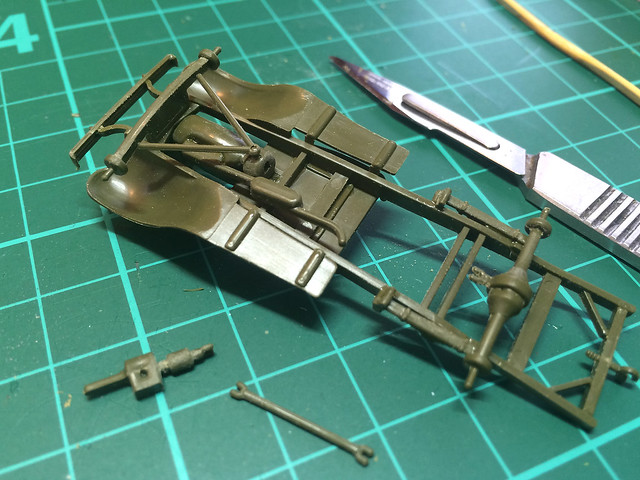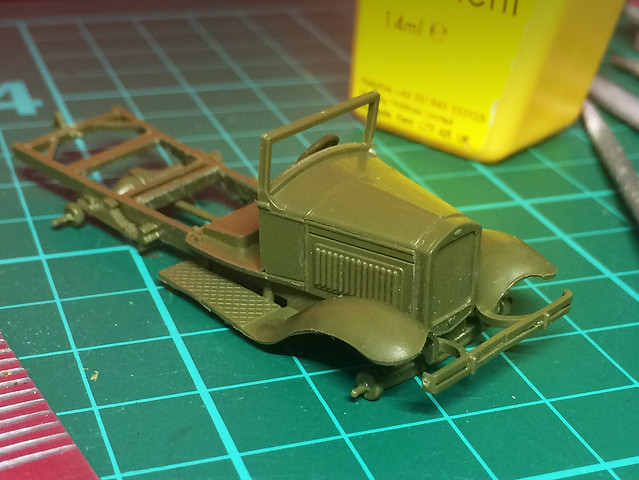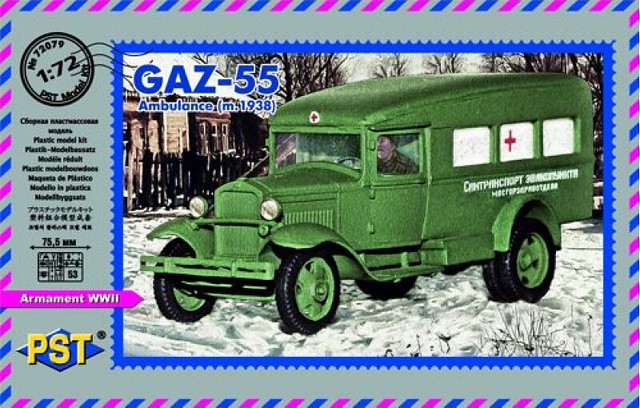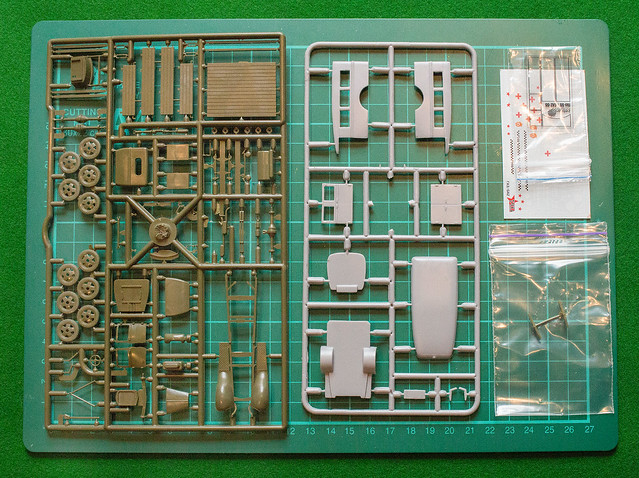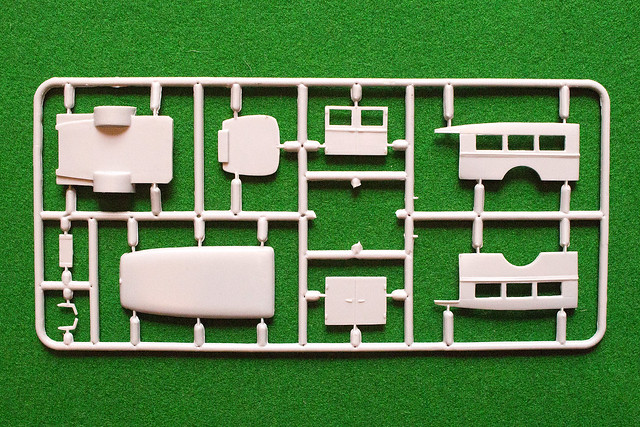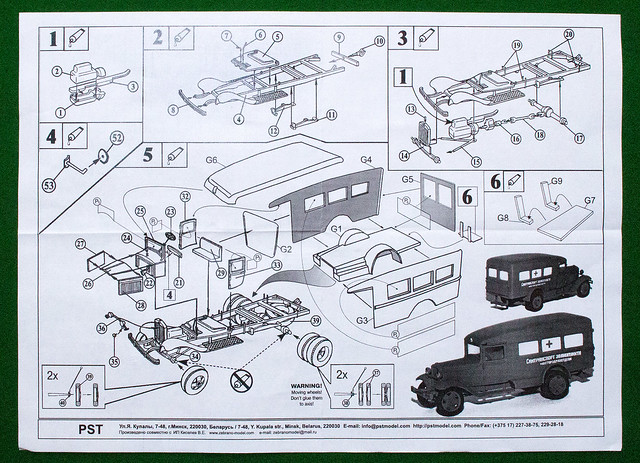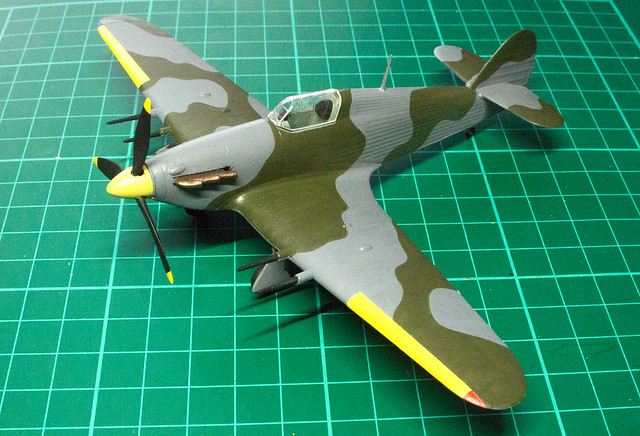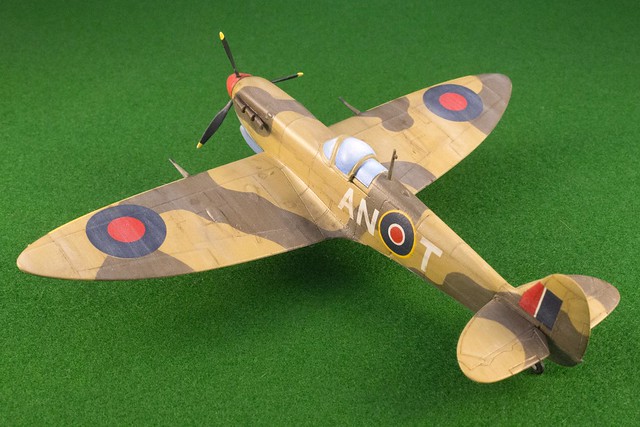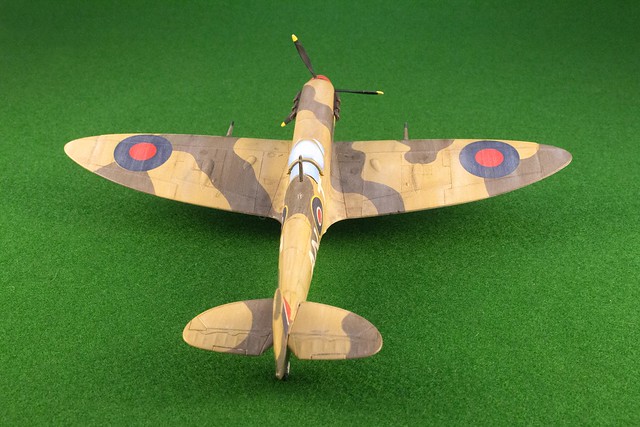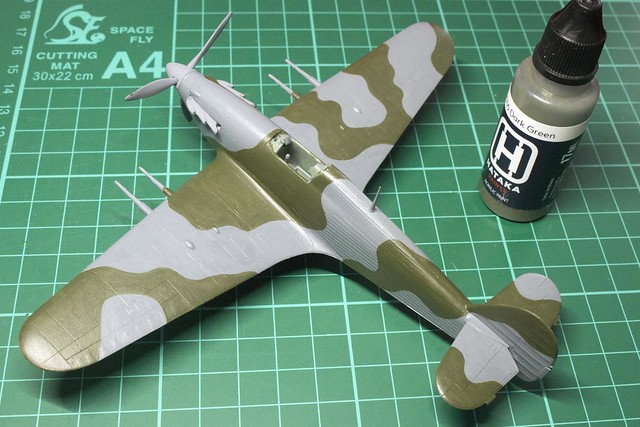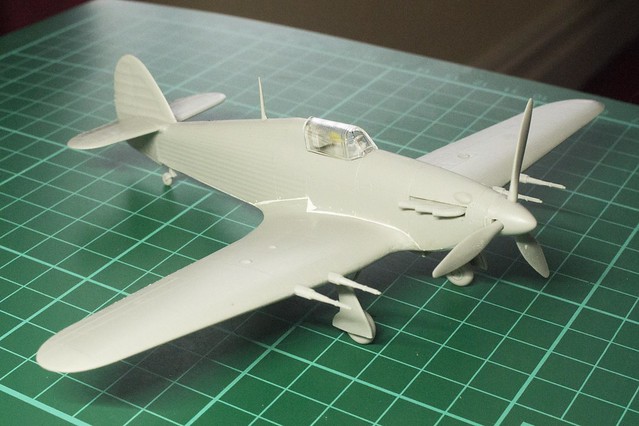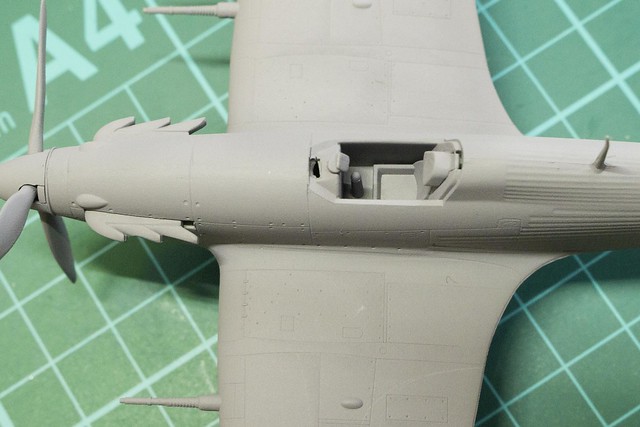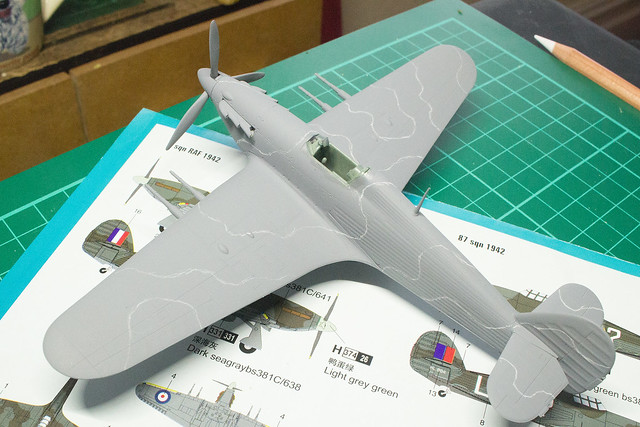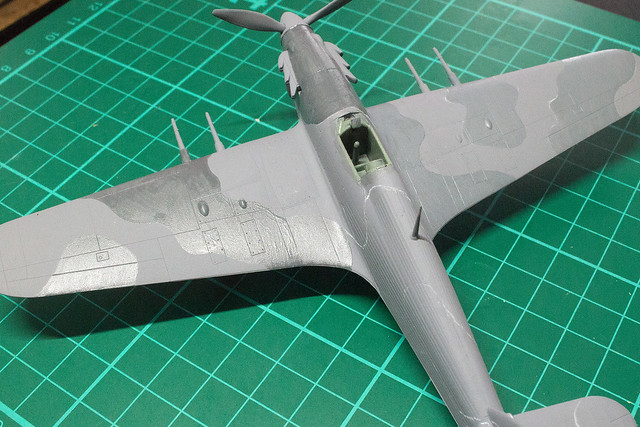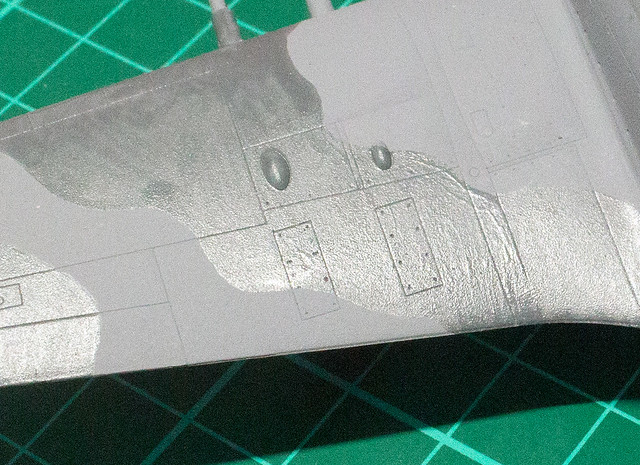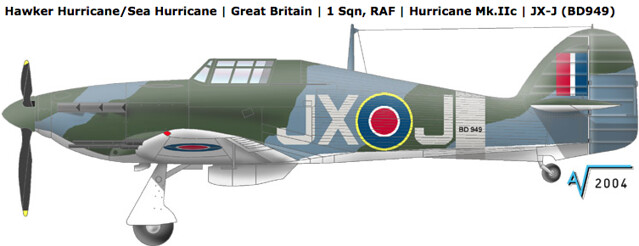Hobby Boss 1/72 Hawker Hurricane Mk. IIC - Part 3
The final parts of the easy build kit went together very quickly and with no real bother. I did have to fill the unsightly gap where the fuselage joins the one-piece wing component.
One other detail that's worth mentioning is the cockpit, or rather the lack of detail therein. It is better than Hobby Boss's Easy Build Spitfire that I recently made (which was nothing more than an empty slot), but that's not saying much. Still, here's what you get...
Not much to see, really. A seat, a headrest, a very rudimentary (and incorrect) joystick and a simple gunsight. I'm hoping that once the canopy is on that this poor detail will not be so noticeable.
Now, having primed the model with Humbrol Spray Acrylic Primer I started marking out the camouflage pattern using a white pencil crayon...
As this model is a painting test to see how easily
Hataka paints are applied by brush I'm applying the camo scheme freehand, but some faint guidelines will help me paint a fairly realistic pattern. Hopefully.
I wasn't all that impressed with how the Hataka acrylic paints went on using an airbrush, so let's see if they brush on any better...
Nope! Not liking this!
Maybe it's just me, maybe I just don't like brush painting (large areas), but Hataka paints continue to be a challenge. However, I have learned a couple of things...
First of all,
mix Hataka paints well -
I mean really well. On my first attempt, I shook the Hataka paint bottle the same amount of time I do with my Vallejo paints, about 30-40 seconds (really hard). But this still resulted in a milky solution where the paint binder was not completely mixed with the paint. This resulted in a streaky and glossy 'paint' (see left wing)...
Learning from this I shook and shook
and shook the Hataka paint, ensuring that the ball-bearing that they put in their bottles was floating free in the bottle (it sometimes sticks to the side if you leave the bottles unused for a while). This time, I shook the bottle for well over a minute, and the difference was marked.
The binder was properly mixed, this time, the paint was easier to apply and not quite so streaky. BUT, there was also a marked colour change in the paint compared to the colour I expected (see the right wing of the above photo). I was expecting Hataka's 'Ocean Grey' to be a darker grey (based on the Hobby Boss paint instructions), but it turned out not that much darker than the primer I sprayed on.
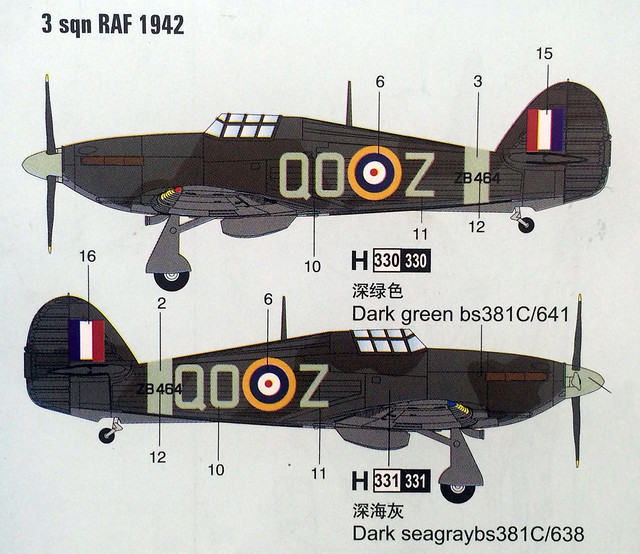 |
| Hobby Boss paint instructions... |
The Hobby Boss paint instructions indicate a mid-charcoal grey for the fuselage, but checking online references (see above photo) it looks like Hataka is closer to the correct shade of grey. So, once again, while using Hataka paints are a challenge (at least for me, it seems) they are very good renditions of the correct original paint schemes.
And, onto the 'Dark Green'
Despite my problems, I decided that as I've gone this far I might as well complete the model and the test (I was tempted to just respray the model, but resisted)!
So...It's shake, shake, shake, shake that Hataka paint!
While still not happy, I seem to be getting the measure of brush applying Hataka paints. Unlike when airbrushing, do not attempt to use Humbrol Acrylic Thinners but instead just use ordinary tap water to get the paint to a useable consistency. I have also settled on applying two thinner coats of paint rather than trying to get a good coat with one coat.
The Hataka paint has a tendency to dry fast (as I discovered to my horror when using with an airbrush) so you have to watch our for drying stains where you are brushing over already drying paint. Two light coats helps with that issue as well.
Even so, I found I had to be reasonably speedy in applying my coats and I took the precaution of applying the paint in zones - filling in panels so that the edge of my completed areas did not show up under the next brushed section. Stop and start mid panel and you are liable to see where you stopped underneath the next coat.
The effect is still a little streaky for my tastes - I cannot say that brush painting or Hataka paints have grown on me any!
